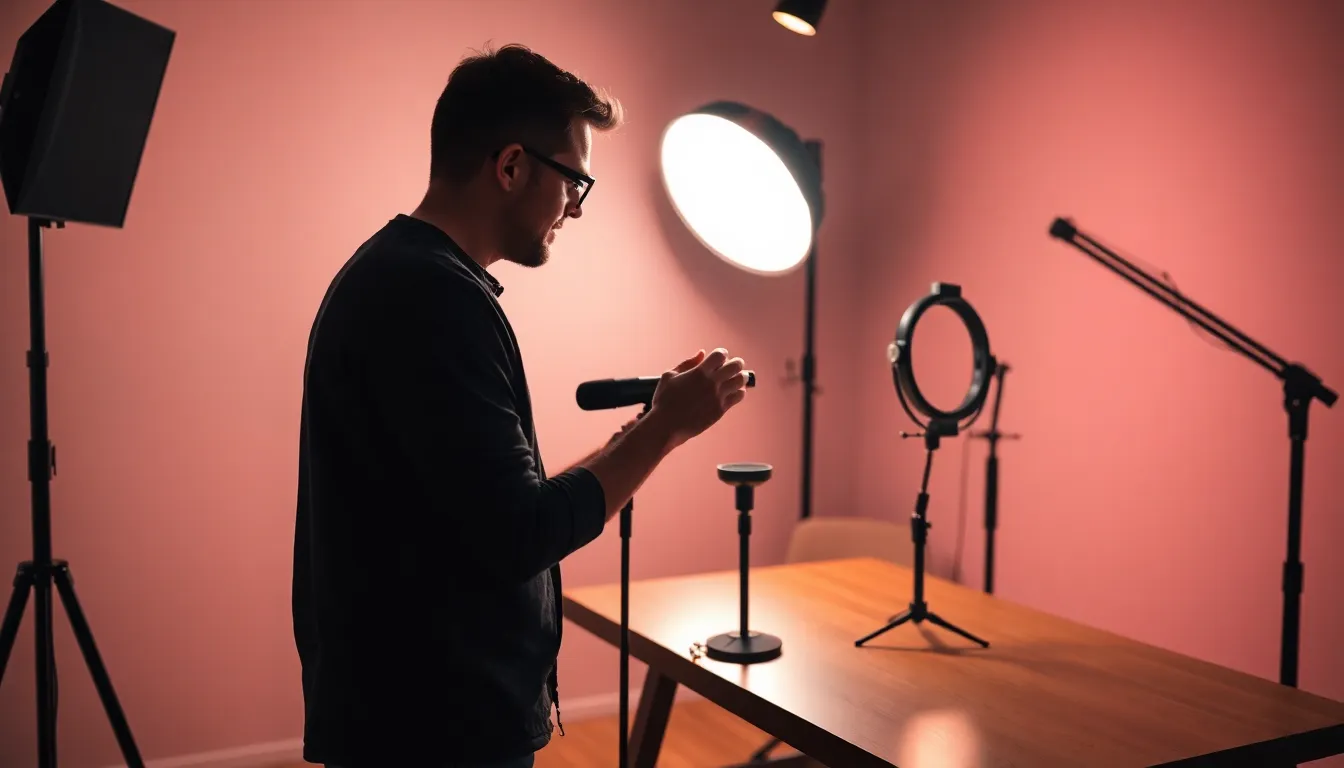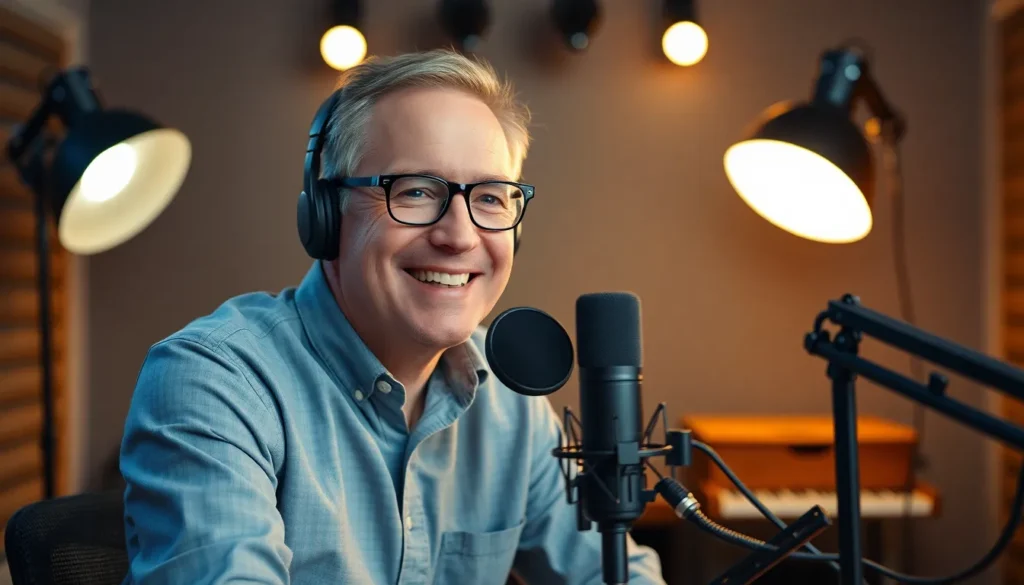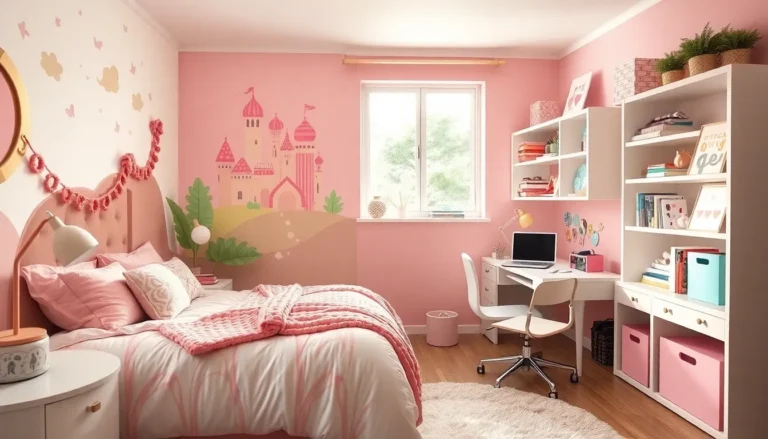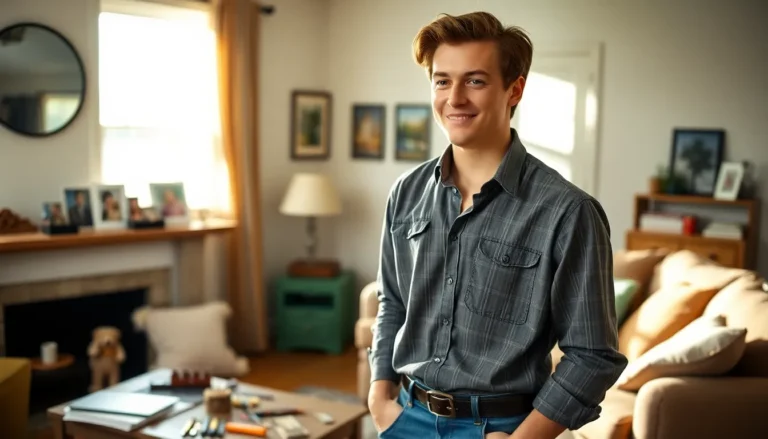In the world of podcasting, great content is essential, but what good is a captivating conversation if it’s lit like a horror movie? Podcast lighting isn’t just about avoiding those unflattering shadows; it’s the secret sauce that transforms an average setup into a professional studio. With the right lighting, hosts can look as good as their audio sounds, giving listeners a visual treat that makes them want to stick around.
Table of Contents
ToggleUnderstanding Podcast Lighting
Effective podcast lighting influences viewer perception significantly. Proper illumination enhances both professionalism and engagement, essential for retaining audience interest.
Importance of Good Lighting
Good lighting eliminates harsh shadows and creates a visually appealing environment. It enhances the host’s appearance and promotes a polished look. Visual clarity fosters credibility, conveying seriousness about the content produced. Bright, even lighting assists in maintaining listener focus on the discussion rather than distractions in the background. It’s evident that professional lighting directly impacts audience retention and engagement.
Types of Lighting Used in Podcasts
Various lighting types serve different purposes in podcast setups. Key lighting provides the primary source of illumination, ensuring the host stands out. Fill lighting softens shadows created by key lights, delivering a balanced look. Backlighting adds depth by highlighting subjects against the background, offering a three-dimensional effect. Softbox lights, LED panels, and ring lights are popular options among podcasters. Each lighting choice contributes uniquely to enhancing the visual quality of the podcast presentation.
Essential Equipment for Podcast Lighting

Effective lighting equipment plays a crucial role in achieving professional-quality visuals for podcasts. Specific tools can enhance the visual appeal and maintain audience engagement.
Key Lighting Tools
Softbox lights provide diffused light, softening harsh shadows. LED panels offer versatility, allowing adjustments in brightness and color temperature. Ring lights create even illumination, ideal for highlighting the host’s face. Each light type serves its unique purpose in a podcast setup. The combination of these tools can create a well-lit environment that captivates viewers.
Budget-Friendly Lighting Options
Natural light serves as an affordable option, simply utilizing windows when available. Desk lamps can work effectively when modified, using white bulbs to mimic soft light. Clamp lights provide flexibility by attaching to various surfaces, directing light where necessary. Utilizing practical items for lighting can save on costs while maintaining a polished look. Simple adjustments to these everyday items enhance visual quality without breaking the bank.
Techniques for Optimal Podcast Lighting
Effective podcast lighting enhances not just the visual quality but also the viewer’s experience. Following specific techniques helps achieve optimal results.
Three-Point Lighting Setup
Three-point lighting serves as the foundation for professional-looking setups. This method utilizes key lighting to highlight the subject’s face, fill lighting reduces harsh shadows, and backlighting adds depth and separation from the background. Each light plays a vital role in creating a balanced scene. Podcasters can position the key light at a 45-degree angle for an inviting look. A fill light placed opposite softens shadows without overexposing the scene. Backlighting should be positioned above and behind the subject to create visual interest. This setup significantly enhances the overall professionalism of the podcast.
Natural Light Utilization
Natural light can improve visual appeal when used strategically. Positioning the setup near large windows allows ample daylight to fill the space. Morning or late afternoon light offers soft illumination, reducing harsh contrasts. Avoid direct sunlight, as it can create unflattering highlights and deep shadows. Diffusion materials, such as sheer curtains, help soften intensity while maintaining brightness. Using reflectors can bounce light onto the subject to fill in shadows. This low-cost method enhances visual quality without extensive equipment and maintains an engaging ambiance for viewers.
Common Mistakes in Podcast Lighting
Effective podcast lighting plays a crucial role in visual appeal. Many podcasters overlook common mistakes that can diminish their production quality.
Overexposure Issues
Overexposed lighting creates a washed-out look. Bright lights can result in stark highlights that distract from the subject. Regularly checking exposure settings on cameras can help prevent these issues. Adjusting light intensity can help achieve a balanced look without losing details. Utilizing dimmers or adjusting the distance from the subject promotes better control over brightness. Avoiding settings that cause glare or reflections also improves overall image quality.
Inconsistent Lighting Sources
Inconsistent lighting sources lead to uneven illumination. Using different types of lights can create color temperature mismatches, which can distract viewers. Sticking with lights of the same type helps maintain a uniform look. For instance, mixing daylight and tungsten lights can result in unflattering hues. Positioning lights to create a cohesive effect enhances the overall visual quality. Regularly reviewing lighting consistency during setup can ensure a polished presentation, aligning with the intended professional atmosphere.
Investing in quality podcast lighting is essential for creating a professional and engaging visual experience. By implementing techniques like the three-point lighting setup and utilizing effective tools, podcasters can significantly enhance their visual appeal. This attention to detail not only improves the overall production quality but also helps retain audience interest.
Avoiding common lighting mistakes ensures that the podcast remains polished and inviting. With the right approach to lighting, podcasters can elevate their content and build credibility among listeners. Ultimately, good lighting is a key element that complements great audio, making it a vital consideration for anyone serious about their podcasting journey.



